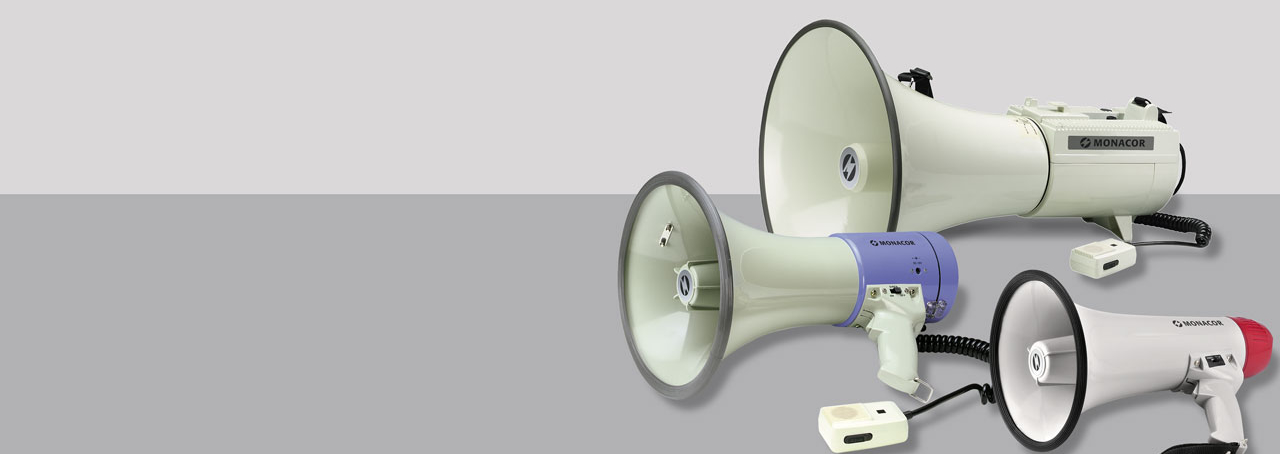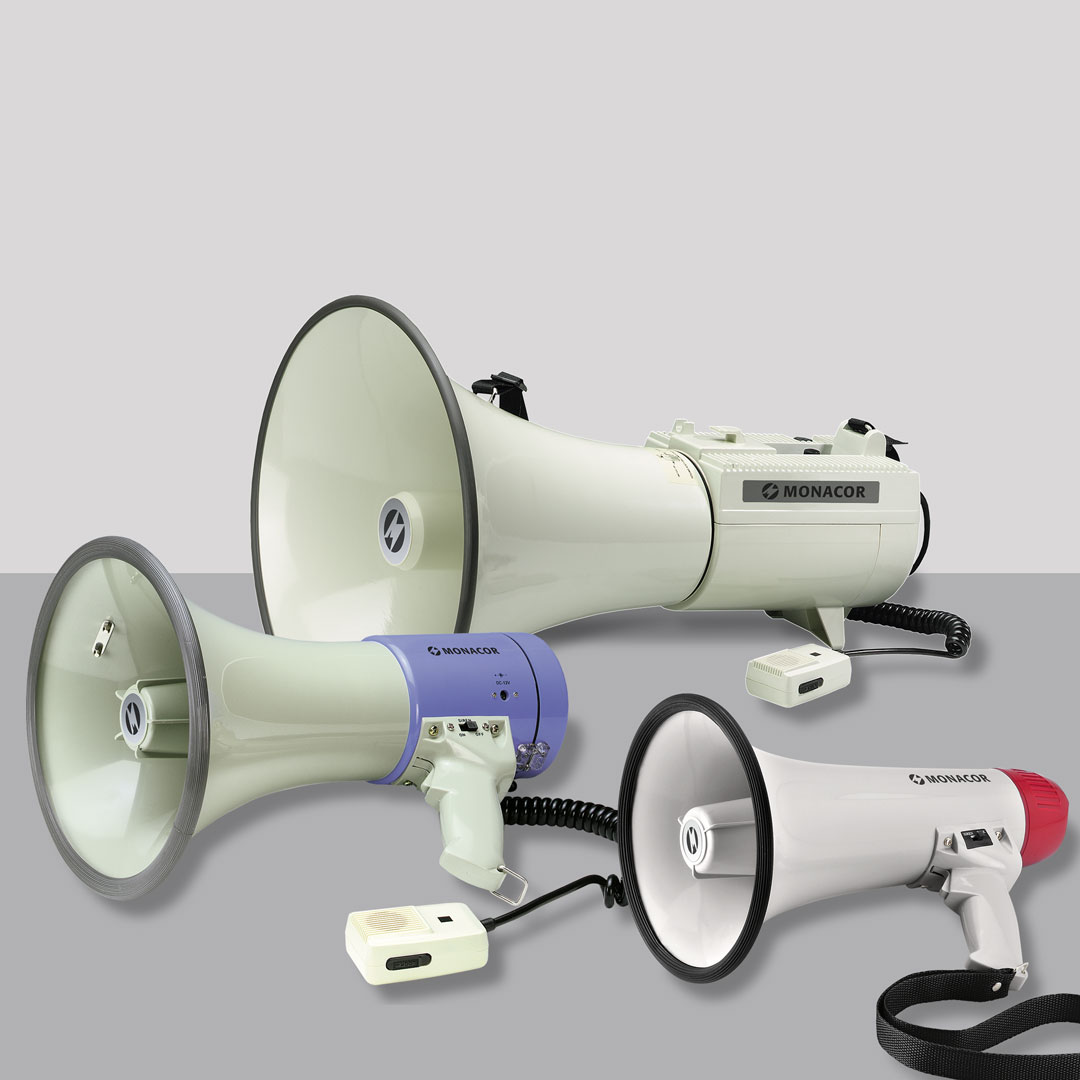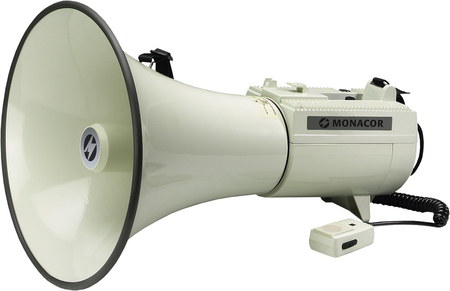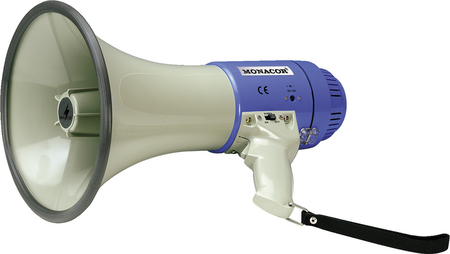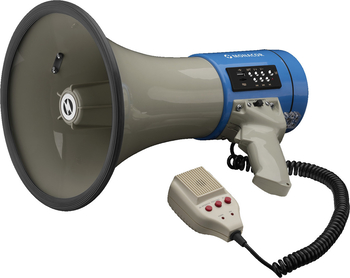An electric megaphone is a mobile PA system. Ultimately, it is an electronic device that uses electrical energy to amplify the human voice. It consists of:
a microphone that converts sound waves into an electrical audio signal,
a battery-powered amplifier that increases the power of the audio signal,
a speaker that converts the audio signal back into sound waves.
Electric megaphones, while slightly heavier than acoustic megaphones, amplify the voice to levels exceeding 120 dB. They have replaced the acoustic megaphones in most cases and are usually used wherever no stationary PA systems are available, for example at outdoor sporting events, at rallies and demonstrations or in places where an operation or mission needs to be coordinated.
The transistor was the breakthrough for mobile megaphones
Electronic PA systems have been around since the development of tube amplifiers in the early 1920s. However, the tube versions were too heavy to be portable. The development of microelectronics was needed for portable electric megaphones. This followed the invention of the transistor in 1947. The world's first transistorised megaphone was launched in 1954.
Megaphones: Handheld PA system
Electronic megaphones usually take the form of the old acoustic megaphone, with a microphone on one end and a horn speaker on the other, a pistol grip on the side, and a switch to turn it on. When in use, the trigger is pressed to turn it on when speaking. Other, larger versions hang from the shoulder by a strap and offer a separate handheld microphone on a cord that can be spoken into, allowing the user to speak to a crowd without the instrument covering their face. A wide variety of modern electric megaphones are available to purchase and features such as performance, weight, price and accessories such as alarms and shoulder straps all contribute to consumer choice.
